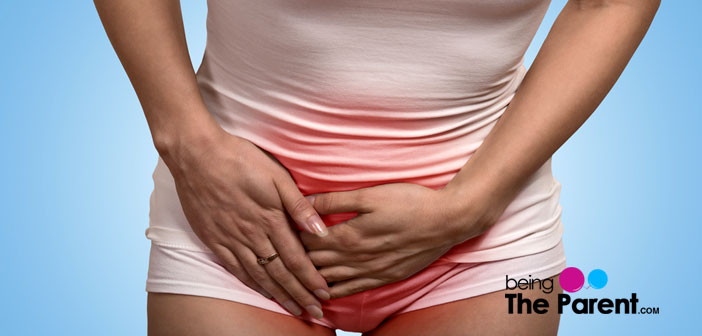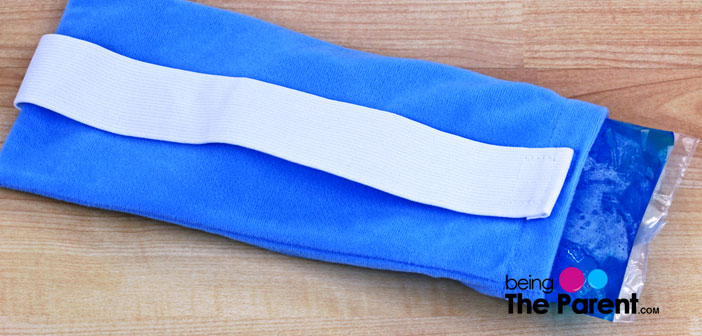Having a baby brings with itself immense joy and happiness, but if you thought all your troubles are over, you are in for some disappointment. Pushing a baby out of a relatively small opening can leave your vaginal and perineal muscles torn, with tears, and sometimes with stitches. You might think that contractions were the worst part of the whole baby-making process, but it ain’t over yet.

What Is Postpartum Perineal Pain?
When you have a baby through a normal delivery, the baby gets pushed out through the vaginal opening. The area that undergoes a lot of stretching and pressure and even tearing is known as the perineum, that lies between the vagina and the anus. All the adjoining muscles and the whole of the area undergoes a lot of pressure during childbirth through a normal delivery, and in some cases a doctor may even cut off a little portion to make way for the baby, taking the call for an episiotomy. This could cause a lot of perineal pain and discomfort. Even if you did not have a surgical tear, the whole process o childbirth can leave your most sensitive area exceptionally tender, swollen and hurtful. It is this pain coupled with the discomfort that is known as the postpartum perineal pain.
How Long Does The Postpartum Perineal Pain Last?
Depending on the severity of the tear and the delivery method, below is some indication of the recovery time and the perineal pain you could have to cope with. This is just an approximation and reality may be quite different from one mother to mother:
- Normal delivery without tears: Expect the perineal pain and discomfort to last for about 5 weeks or so. The whole perineum region will also be swollen and tender
- Tears or an episiotomy: Depending on the severity of the tears, it could be 6 weeks or so that you could feel pretty sore and uncomfortable down there. Even if the wound heals early, generally between 7-10 days, the soreness could persist for quite some time
- Labor followed by a C-section: In the event you had gone into labor and then gave birth by C-section, there would not be any tears but the entire vaginal area could be swollen and tender depending on how long you were in labor and how close was the baby to the opening
8 Ways To Get Comfort From Perineal Pain
Whatever way you might have had your delivery, the below listed 8 tips could help you ease the pain and discomfort arising in the perineum area:
-
- Stay clean: Since the perineal area is already sensitive, tender and sore, it is extremely important that it is kept clean at all times, lest make it a room for bacteria and infections. When you pee, sprinkle some warm water to prevent irritation to the skin. Also expose the area to air and keep it free
- Warm sitz baths: Sit in a warm tub immersing only your hips and buttocks for about 20 minutes 2-3 times a day. Women swear by the relief they get from warm sitz baths!

-
- Ice packs: Put in some crushed home-made ice made from filtered water in surgical gloves and use it to get relief from perineal pain post delivery. Not only will an ice pack numb the pain, but will also speed up the healing process
- Ample rest: Rest is a must so as to avoid any added pressure on your lower body. Avoid long periods of standing and sitting and try to lie sideways alleviating pressure from the perineum area. If you have to, opt for sitting on pillows that have an opening in the center
- Do your Kegels: Kegels are not just a boon pre-delivery, but also help strengthen and restore muscle strength. Kegels also help expedite the healing process and improve blood circulation to provide relief
- Hot compresses: Hot compresses a few times a day with a clean heating pad could also provide some relief from the discomfort and pain

- Comfortable clothing: As you keep your area clean, you also need to ensure that you do not irritate the skin with tight fitting underwear. Wear loose cotton underpants and facilitate airflow to the region. This will ensure a speedy recovery
- Numb the area: If the pain becomes unbearable, you could try using some local anesthetics as recommended by your doctor. Some pain relieving drugs may also help, but ensure that you do not pick up OTC medications and do take the advice of your doctor first
When Should I See The Doctor For Postpartum Perineal Pain?
If your perineum area still remains sore and the pain does not ease out even after taking these steps and you continue to feel uncomfortable, it is wise to seek the advice of your doctor as soon as possible. It is imperative not to ignore the pain and discomfort and seek medical attention. Depending on his assignment and your delivery complications, your doctor would be able to recommend some better pain relief methods which may include medicines that are safe for you and the baby.

